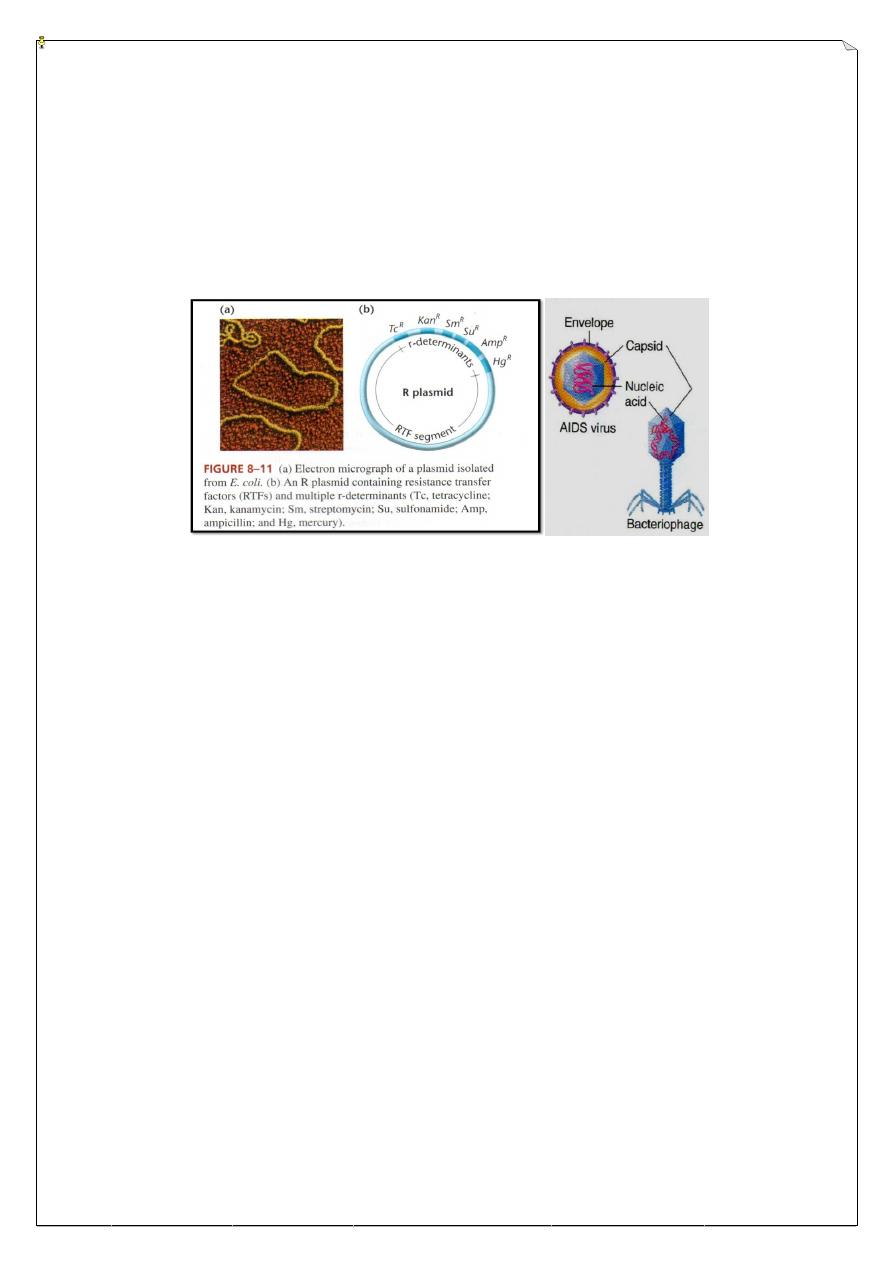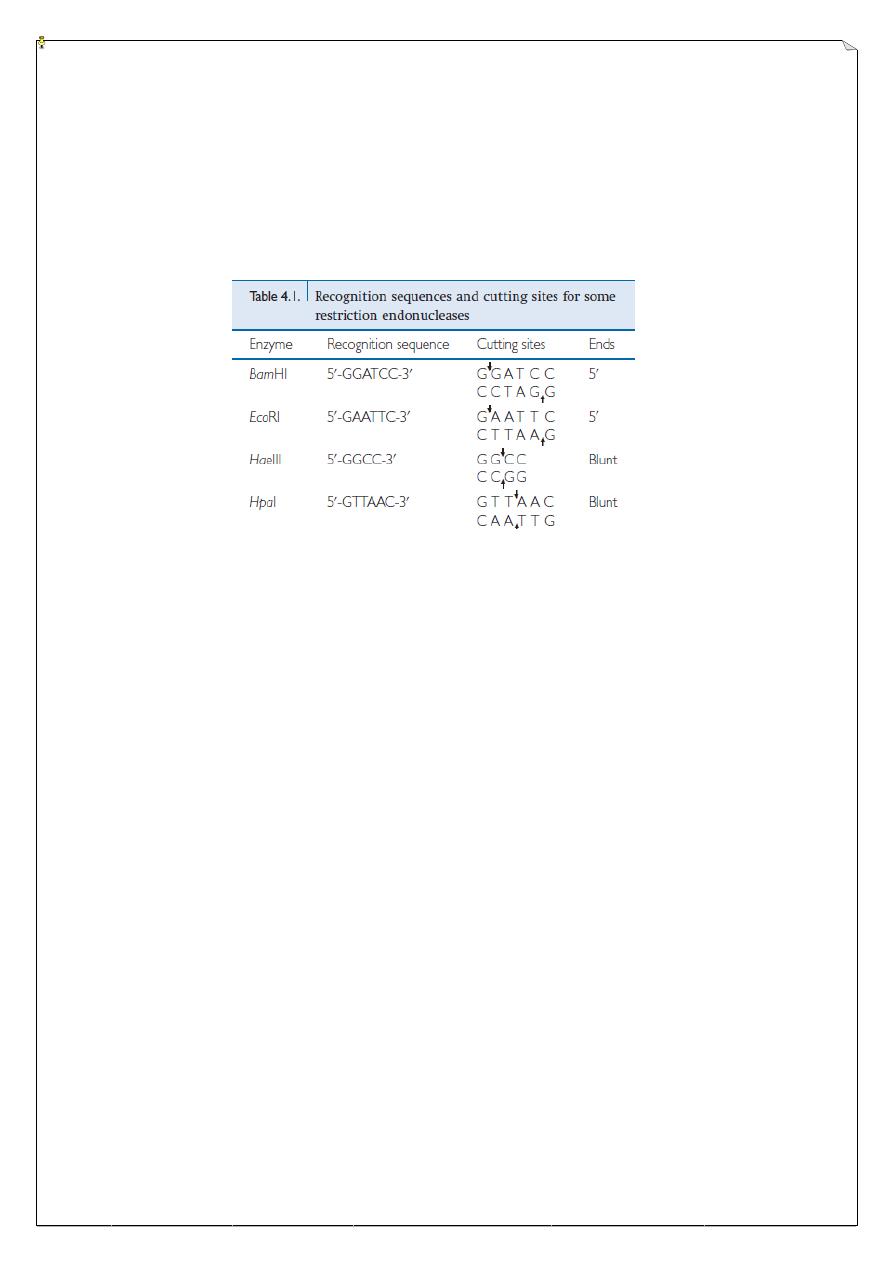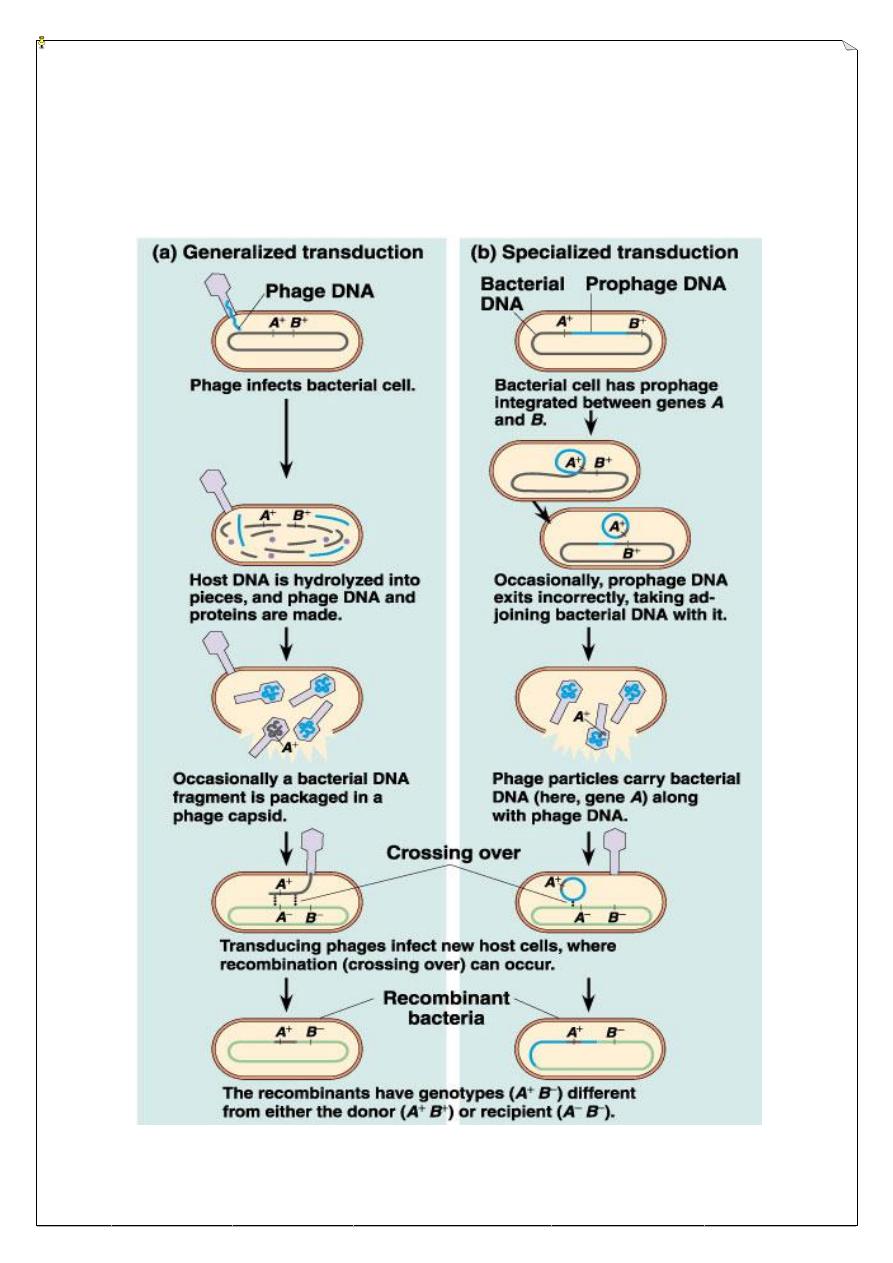
1
Medical students Medical Biology
lesson
th
4
Genetic Engineering
Genetic Engineering
There are several terms that can be used to describe the technology, including
gene manipulation, gene cloning, recombinant DNA technology, genetic
modification, and the new genetics. There are also legal definitions used in
administering regulatory mechanisms in countries where genetic engineering is
practiced. The discovery of the structure of DNA by James Watson and Francis Crick
in 1953 provided the stimulus for the development of genetics at the molecular level,
and the next few years saw a period of intense activity and excitement as the main
features of the gene and its expression were determined. This work culminated with
the establishment of the complete genetic code in 1966 -- the stage was now set for
the appearance of the new genetics.
Gene expression
The flow of genetic information is from DNA to protein. Whilst a detailed
knowledge of gene expression is not required in order to understand the principles of
genetic engineering, it is useful to be familiar with the main features of transcription
and translation and to have some knowledge of how gene expression is controlled.
DNA cloning
One approach is to isolate the gene(s) responsible for the expression of a
protein or the formation of a product. The solution to this dilemma is to place a
relatively short fragment of a genome, which might contain the gene or other
sequence of interest, in an autonomously replicating piece of DNA, known as a
vector, forming recombinant DNA, which can be replicated independently of the
original genome, and normally in another host species altogether. These plasmids are
several types like F-plasmid (fertility) and R-plasmid (resistant). Propagation of the
host organism containing the recombinant DNA forms a set of genetically identical
organisms, or a clone. This process is hence known as DNA cloning. The initial
isolation and analysis of DNA fragments is almost always carried out using the
bacterium E. coli as the host organism, although the yeast Saccharomyces cerevisiae
is being used to manipulate very large fragments of the human genome. Plasmid and

2
phage vectors have been used to express genes in a range of bacteria other than E.
coli, and some phages may be used to incorporate DNA into the host genome, for
example phage λ . In the case of plasmid vectors in E. coli which is the most common
situation.
The various applications of gene cloning: include recombinant protein
production, genetically modified organisms, DNA fingerprinting, diagnostic kits and
gene therapy.
) (لالطالع
This process may be divided into the following steps:
● Isolation of plasmid DNA containing the cloned sequence of interest.
● Digestion (cutting) of the plasmid into discrete fragments with restriction
endonucleases.
● Separation of the fragments by agarose gel electrophoresis.
● Purification of the desired target fragment .
● Ligation (joining) of the fragment into a new plasmid vector, to form a new
recombinant molecule.
● Transformation: transfer of the ligated plasmid into an E. coli strain.
● Selection of transformed bacteria.
● Analysis of recombinant plasmids.
Restriction enzymes – cutting DNA
Restriction endonucleases are bacterial enzymes which cut (hydrolyze) DNA
into defined and reproducible fragments. In bacteria, they form part of the restriction–
modification defense mechanism against foreign DNA. They are the basic tools of
gene cloning. To prevent the enzyme acting on the host cell DNA, the modification
enzyme of the system (a methylase) modifies the host DNA by methylation of

3
particular bases in the restriction enzyme’s recognition sequence, which prevents the
enzyme from cutting the DNA. Restriction enzymes are of three types (I, II, or III).
Most of the enzymes commonly used today are type II enzymes, which have the
simplest mode of action. These enzymes are that cut at an internal position in a DNA
strand (as opposed to beginning degradation at one end) they are known as
endonucleases. In essence they may be thought of as molecular scissors
.
) (لالطالع
DNA ligation
To insert a target DNA fragment into a vector, a method for the covalent
joining of DNA molecules is essential. DNA ligase enzymes perform just this
function; they will repair (ligate) a break in one strand of a dsDNA (double strand)
molecule provided the 5´ end has a phosphate group.
Recombinant DNA
We can now envisage an experiment in which a DNA fragment containing a
molecules gene (X) of interest (the target DNA) is inserted into a plasmid vector. The
target DNA may be a single fragment isolated from an agarose gel, or a mixture of
many fragments from, for example, genomic DNA. If the target has been prepared by
digestion with EcoRI, then the fragment can be ligated with vector DNA cut with the
same enzyme. In practice, the vector should have only one site for cleavage with the
relevant enzyme, since otherwise; the correct product could only be formed by the
ligation of three or more fragments, which would be very inefficient. There are many
possible products from this ligation reaction, and the outcome will depend on the
relative concentrations of the fragments as well as the conditions, but the products of

4
interest will be circular molecules with the target fragment inserted at the EcoRI site
of the vector molecule (with either orientation), to form a recombinant molecule.
Transformation:
Transformation is the process of take-up of foreign DNA, normally plasmids
by bacteria. Plasmids are cloned by transfer into strains of E. coli with defined genetic
properties. The E. coli cells can be made competent to take up plasmid DNA by
treatment with Ca ²+. The cells are plated out on agar and grown to yield single
colonies, or clones.
Selection:
Bacteria which have taken up a plasmid are selected by growth on a plate
containing an antibiotic to which the plasmid vector encodes resistance. If all the
competent cells present in a transformation reaction were allowed to grow on an agar
plate, then many thousands or millions of colonies would result. Furthermore,
transformation is an inefficient process; most of the resultant colonies would not
contain a plasmid molecule and it would not be obvious which did.
Gel analysis
Tracks corresponding to the vector plasmid and to recombinants are indicated.
The larger size of the recombinant plasmid is seen by comparing the undigested
plasmid samples, containing supercoiled and nicked bands, and the excision of the
insert from the recombinant is seen in the EcoRI digest.
Lytic and lysogenic infection
:
In lytic infection, virions are released from the cell by lysis. However, in
lysogenic infection viruses integrate their genomes into that of the host cell, and may
be stably inherited through several generations before returning to lytic infection.
Transduction:
Transduction is the process by which foreign DNA is introduced into a cell by
a virus or viral vector. This process has two types:
Generalized Transduction
The process in which any bacterial gene is may be transferred to another
bacterium via a bacteriophage.

5
Specialized Transduction
Specialized transduction occurs when the prophage excises imprecisely from
the chromosome so that bacterial genes lying adjacent to the prophage are included in
the excised DNA.
) (لالطالع

6
Protein engineering
This involves altering the structure of proteins via alterations to the gene
sequence and has become possible because of the availability of a range of
techniques, as well as a deeper understanding of the structural and functional
characteristics of proteins. This has enabled workers to pinpoint the essential amino
acid residues in a protein sequence; thus, alterations can be carried out at these
positions and their effects studied. The desired effect might be alteration of the
catalytic activity of an enzyme by modification of the residues around the active site,
an improvement in the nutritional status of a storage protein, or an improvement in the
stability of a protein used in industry or medicine. Proteins that have been engineered
by the incorporation of mutational changes have become known as muteins.
Furthermore, the yields of biochemical production can be increased much faster than
what was originally possible with classical fermentation.
Medical and forensic applications of gene manipulation
The diagnosis and treatment of human disease is one area in which genetic
manipulation is beginning to have a considerable effect. As many therapeutic proteins
are now made by recombinant DNA (rDNA) methods. The techniques of gene
manipulation impact more directly on medical diagnosis and treatment, and use of
rDNA technology in forensic science. Recent progress in both of these areas is of
course closely linked to our increasing knowledge of the human genome, and new
developments in medical and forensic.
